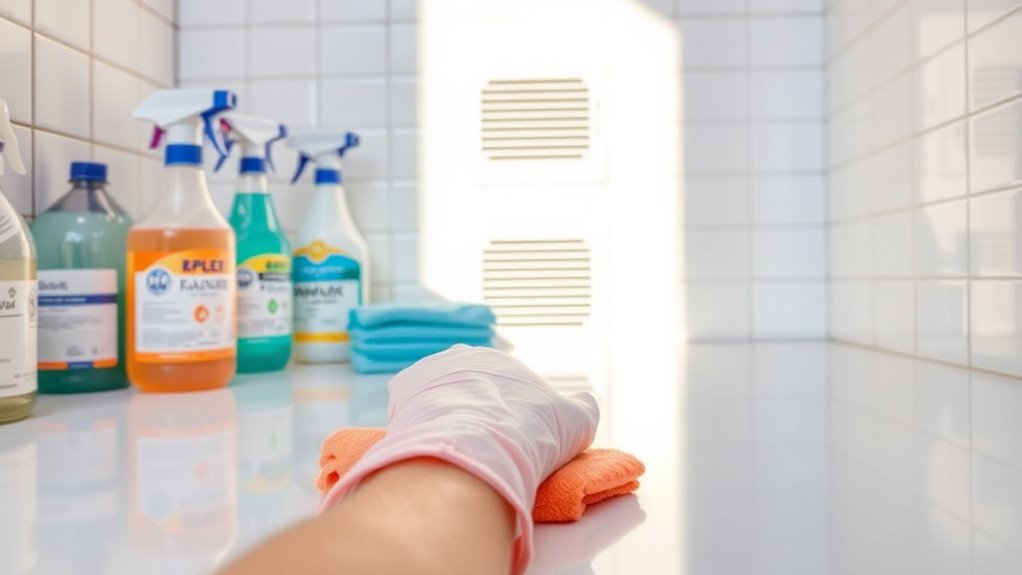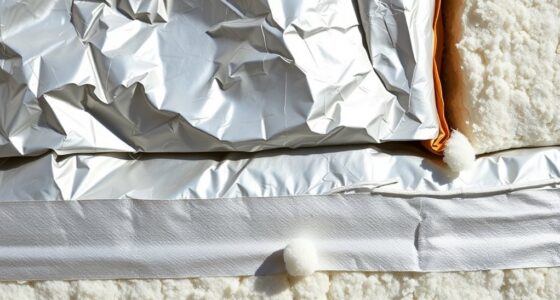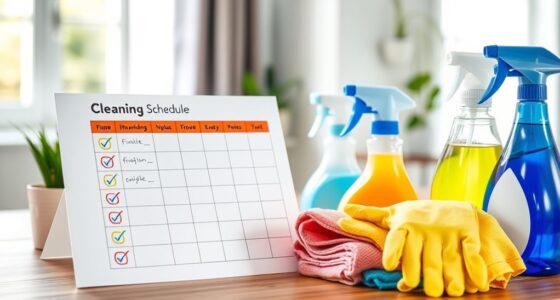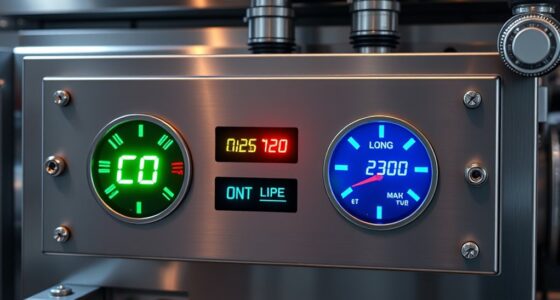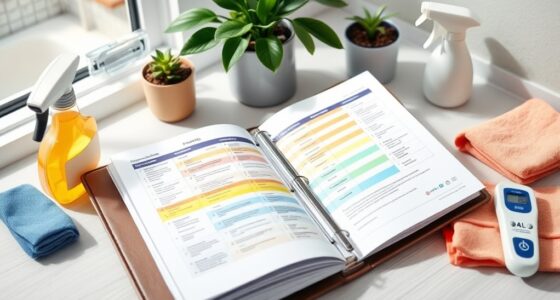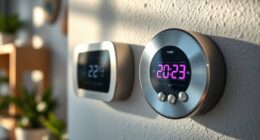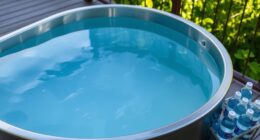To keep your home healthy, establish a consistent cleaning schedule that includes daily, weekly, and monthly tasks, focusing on moisture-prone areas like bathrooms and kitchens. Use HEPA filters on vacuums to trap allergens and prevent mold spores from spreading. Avoid DIY mold removal without proper precautions and never rely solely on harsh chemicals. Proper ventilation, leak repairs, and professional assistance when needed are essential for safe mold prevention. Continue to explore more tips to protect your home environment.
Key Takeaways
- Create a consistent cleaning schedule that includes daily, weekly, and monthly tasks focused on moisture-prone areas.
- Use HEPA-filter vacuums regularly to remove allergens and prevent mold-spore buildup.
- Address leaks promptly and avoid DIY mold removal without proper precautions.
- Rely on professional services for extensive mold issues rather than surface-only cleaning.
- Incorporate essential oils and maintain good ventilation to inhibit mold growth safely.
Establishing an Effective Cleaning Routine for a Healthy Home
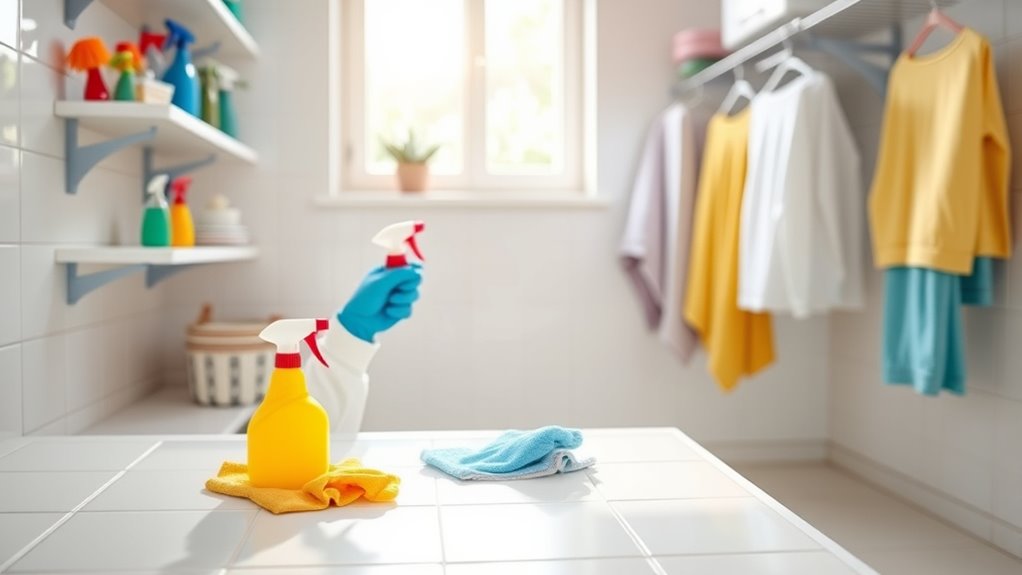
Creating a consistent cleaning routine is vital for maintaining a healthy home and preventing mold growth. Start by establishing clear cleaning schedules that match your lifestyle and home size. Regular vacuum techniques play an essential role in removing dust, dirt, and allergens, especially from carpets and upholstery where mold spores can hide. Use a vacuum with a HEPA filter to maximize air quality and trap tiny particles. Stick to daily, weekly, and monthly tasks to keep mold-prone areas dry and clean. For example, vacuum high-traffic zones weekly and focus on moisture-prone spots such as bathrooms and kitchens. Consistency guarantees you catch potential issues early, keeping your home healthier and mold-free. Incorporating essential oils for mold prevention into your cleaning routine can also support a healthier environment.
Safe and Unsafe Mold Prevention Practices
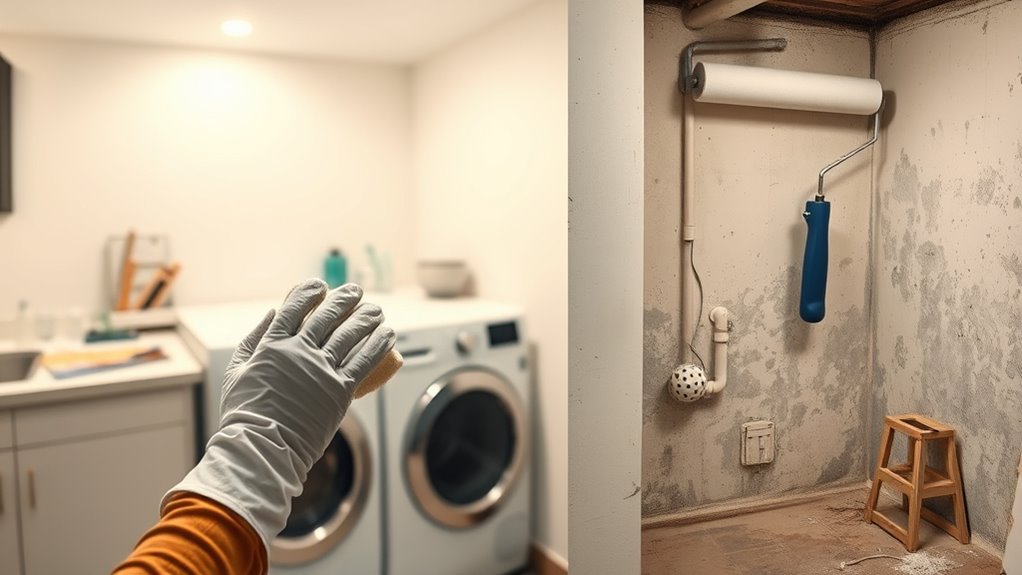
To effectively prevent mold growth, you need to follow safe practices while avoiding actions that can worsen the problem. Using mold-resistant paints can help protect walls from moisture and mold development, especially in high-humidity areas. However, DIY mold removal isn’t always safe or effective; disturbing mold without proper precautions can release spores into the air, worsening health risks. It’s best to address significant mold issues with professional removal services. Avoid using harsh chemicals or bleach without proper ventilation, as these can irritate your skin and eyes or fail to eliminate mold entirely. Regularly controlling indoor humidity, fixing leaks promptly, and cleaning with gentle, mold-inhibiting solutions are safer, more effective strategies. Automation technologies enable scalability and flexibility in managing building environments, which can help prevent mold growth. Remember, safety first—when in doubt, consult professionals for mold problems that go beyond surface cleaning.
Frequently Asked Questions
How Often Should I Deep Clean My Home to Prevent Mold Growth?
You should deep clean your home at least once every three to six months to prevent mold growth. Focus on areas with high humidity, like bathrooms and kitchens. Improve your ventilation habits by using exhaust fans and opening windows regularly. Maintain a consistent cleaning frequency, and don’t forget to check for leaks or moisture buildup. This proactive approach keeps mold at bay and promotes a healthier living environment.
Are Homemade Cleaning Solutions Effective Against Mold?
Sure, DIY cleaners and natural remedies can tackle minor mold issues, but don’t bet your mold prevention plan on them alone. Homemade solutions like vinegar or baking soda are effective for surface mold, yet may fall short on stubborn spores. If you’re serious about mold safety, combine these natural remedies with proper ventilation and regular cleaning schedules. After all, your home deserves a professional touch or at least a well-informed DIY effort.
Can Air Purifiers Help in Mold Prevention?
Air purifier effectiveness can definitely help in mold prevention when you choose models with HEPA filters. They trap airborne mold spores, reducing the risk of growth indoors. Incorporate mold prevention tips like controlling humidity and fixing leaks alongside using an air purifier. While it’s not a standalone solution, combining these strategies creates a healthier environment and minimizes mold-related issues effectively.
What Are Common Mistakes to Avoid During Mold Cleanup?
Did you know that improper mold cleanup can lead to health issues in 75% of cases? To avoid mistakes, don’t ignore moisture control techniques or skip using mold-resistant materials. You should thoroughly dry affected areas and wear protective gear. Avoid using bleach on porous surfaces, as it worsens mold growth. Instead, focus on fixing leaks and ventilating spaces to prevent future mold issues effectively.
How Do I Identify Hidden Mold in My Home?
You can identify hidden mold in your home through visual inspection, looking for dark spots, discoloration, or musty odors in less obvious areas like behind furniture or under sinks. Additionally, use moisture detection tools to find damp spots that may harbor mold. Pay special attention to areas with prior water damage or poor ventilation, as these are common hiding spots for mold growth. Acting promptly helps prevent health issues and property damage.
Conclusion
By establishing a consistent cleaning routine, you prevent dirt and mold from taking hold. By choosing safe practices over unsafe ones, you protect your health and your home. By staying vigilant, using proper ventilation, and avoiding harsh chemicals, you create a safer, cleaner environment. Remember, prevention is proactive, awareness is essential, and your effort makes a difference. Commit to doing this, not that, and enjoy a healthier, mold-free home that you can truly feel good about.
